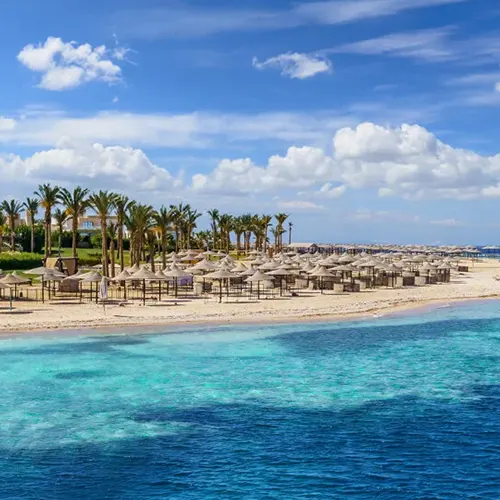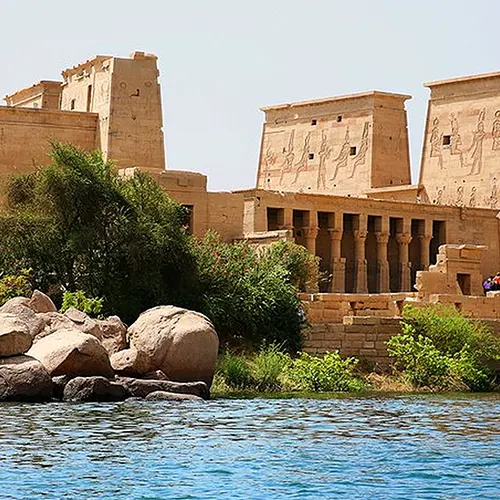
Philae Temple of Isis is the most prominent monument of Philae Island. Philae Island was a rocky island in the middle of the River Nile, located in Aswan.
Philae Island had a great prominence as the center for worshipping the goddess Isis, the mother of the god Horus. This island contains other monuments such as the Kiosk of Trajan, Osiris Chapel, Horus Temple, Hathor Temple, The Gateway of Tiberius, Diocletian, and Augustus Temple.
After the construction of the Aswan Dam, the monuments of Philae Island were submerged underwater for the greater part of the year, and Philae temples were accessible only between August and December. The construction of the High Dam in 1960 threatened to engulf them for good, which resulting transferring the monuments of Philae Island to Agilkia Island in the 1960s during the UNESCO Nubia Campaign, as the temple was dismantled and transferred, stone by stone, from the submerged Philea Island to Agilkia Island. This project took over 9 years to be accomplished.


Philae Temple is one of the last ancient Egyptian temples to remain active, as it continued to function until the reign of the Byzantine Emperor Justinian I. On that date, the priest of Isis, Esmet-Akhom, carved the last dated hieroglyphic inscription, dating to the late 4th century AD.
The design of Philae Temple of IsisThe Temple of Isis is the most famous temple on Philae Island. It was founded in Ptolemy II’s period, then other Ptolemaic Kings contributed by adding more parts to it. This temple is built on the same style of the New Kingdom temples, with adding some other elements that appeared in the Greco-Roman period like the mamisi and the Nilometer. This temple was used during the Coptic period to be a Christian church.
It is thought that the oldest remains of Philae Temple date back to King Taharqa of the 25th Dynasty, who constructed the first shrine for the Goddess Isis.
The plan of this temple is very simple. It consists of the 1st Pylon leading to an open court, the 2nd pylon, and the Holy of Holies.
Pass through the 1st pylon to reach the main court of the temple. While you go through the gate, you will find the French inscription (“a 7 de la République”) on the right. It refers to commemorate Napoleon’s campaign and the pursuit of the Mamelukes by General Desaix in 1799.
On the right of the main court, there are rooms for Isis priests.
The Mamisi or the House of the divine birth of Horus: You can enter the mamisi from the left side of the court or by the direct gate in the western tower of the 1st pylon. It is a symbol of the birth of Horus. There is a scene in this room depicting Isis suckling her son Horus in the marshes and scenes of the birth of the God Horus.
Then 2nd Pylon leading to inner temple area with 10 columns.
Then 3 shrines leading to a sanctuary or the Holy of Holies.
Philae Temple distinguishes with its Sound and Light Show presenting a narrated storytelling the legend of God Osiris and his wife Goddess Isis and the history of Philae Temple and how it was saved by transferring its rocks to the current place.



